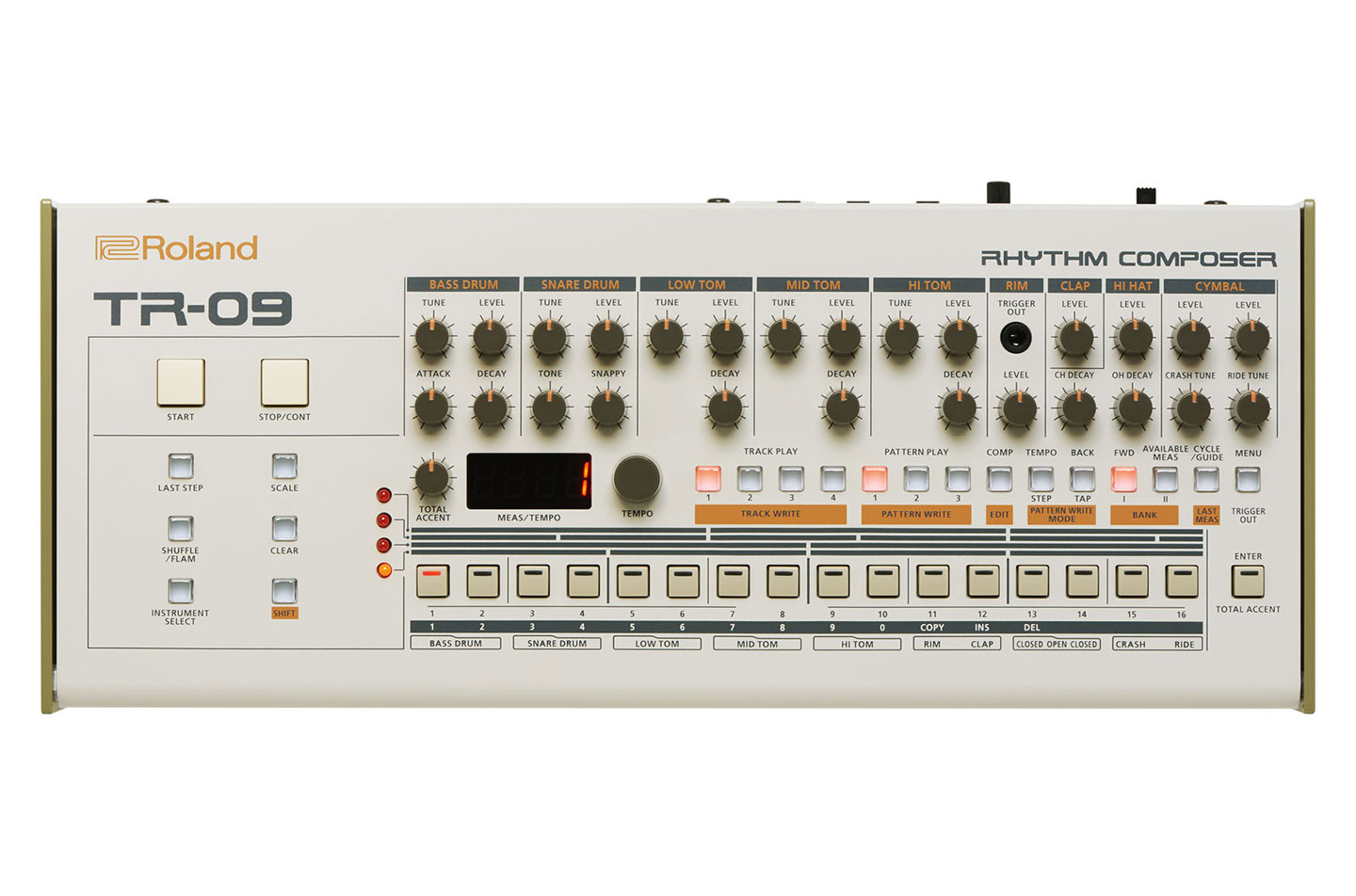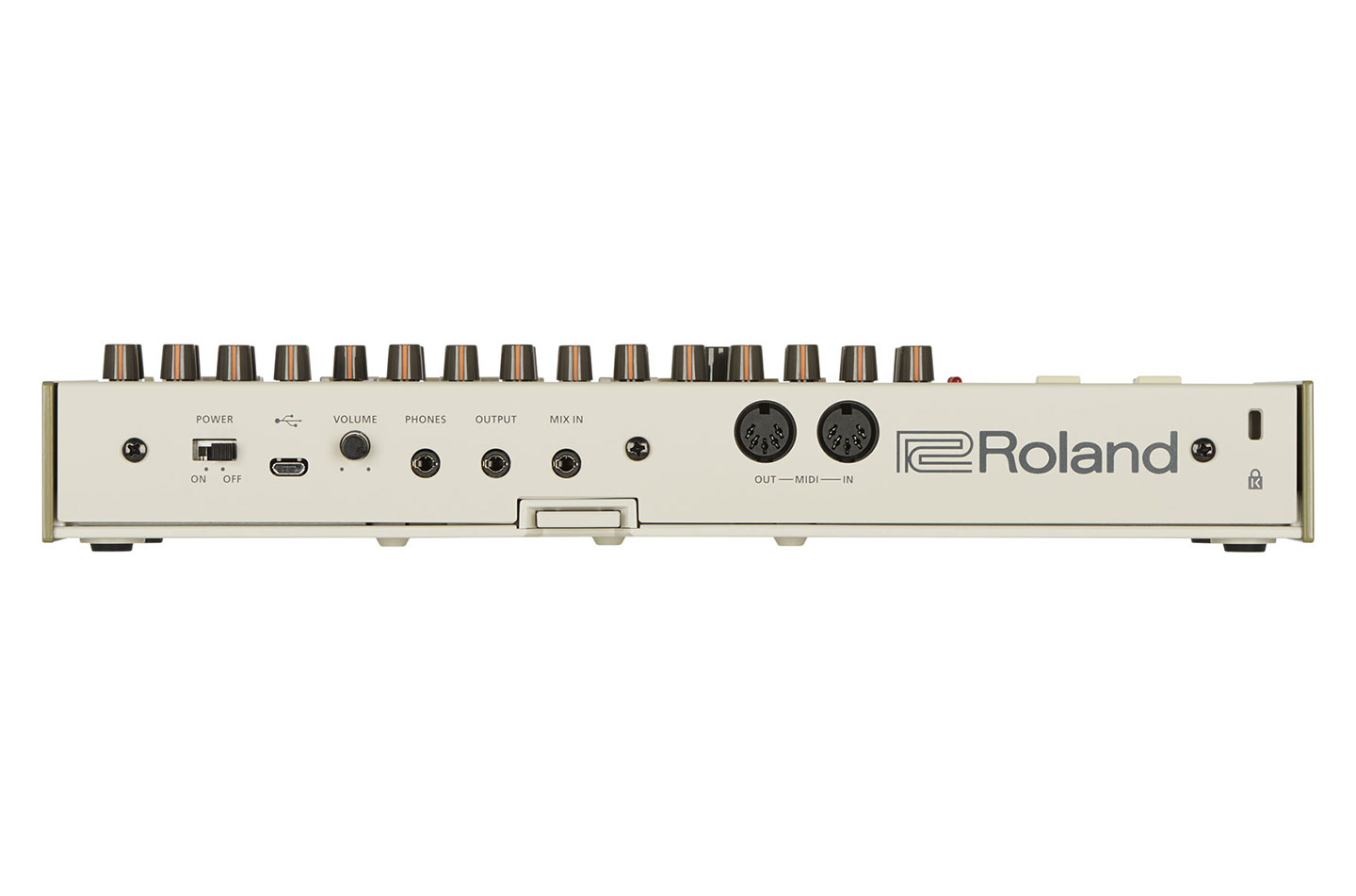- Almost despite itself, Roland's TR-909 drum machine is one of dance music's most fetishised instruments. It wasn't commercially successful and despite its towering legacy, some of its sounds require careful treatment—just look at the whistling, resonant peaks of its cymbals on a spectrum analyser. But this is a good lesson in understanding that technical whims like these have little to do with making enduring music. Despite these supposed shortcomings, the 909 sound signature has attained an almost supernatural level of power. Its hats in particular seem to embody the sound of a good time. The story of how such a humble instrument came to resonate throughout an entire sonic subculture is long, but suffice to say that the sounds themselves are just one factor.
Almost every DAW comes with well-produced 909 samples, yet the original machine still sells for over $4000. Granted, there are always fractional differences in sound between, say, the TR-09, TR-8, TR-909 or a sample pack. But in a production context, these differences are hardly the deciding factor of a track's quality and are, at best, minor concerns. Yet the thing most people seem eager to know is how the sound of the TR-09 compares to the original. Like the TR-8, the TR-09 is powered by Roland's ACB technology, which models actual components rather than waveforms. Roland made a new ACB chip for the TR-09, so yes, it does sound a little different to the TR-8. To generalise, I found the top end to be less hyped and rounder than your average sample pack, which helps it sound more like the original. I also found there to be small variations between each instance of a given sound, which helps beats made on the TR-09 sound more "real" than one built from samples in a DAW. However, what you do to the sounds, how you sequence and produce them, is going to have a far larger impact on the ultimate product than incremental differences in the sounds themselves. The original source can be something of a red herring. If you can't make a TR-09 work in your productions, an original 909 isn't going to help you. What might make a difference to you is the TR-09's interface.
The TR-09 has roughly the same control set as the original machine. So while the difference between the sounds of the TR-09 and my go-to Wave Alchemy samples were negligible—especially after saturation and parallel compression—the rhythms you'd generate and how you controlled the parameters were markedly different. I was particularly happy with how interface changed the way I work with hi-hats. This was one of the first beats I recorded and I was very pleased with the interaction between the hats and snares. The instruments were tracked separately here while the clip below was taken from the stereo out.
Most sounds are available in two velocity settings, plus there's per-step accent and a total accent control. The hats also choke each other, so combining changes in velocity, placement of accent and the total accent amount with live tweaks to the hi-hat decays sounded very alive, especially with some shuffle. The same goes for the snare drum, whose Tone and Snappy controls combine with the aforementioned functions to create hissing, noisy builds. It's a similar story with the three toms, which can be tuned into complimentary pitches and programmed into basslines.
They're sounds you've no doubt heard before and could feasibly recreate the same workflow with MIDI mapping, but you get this instantaneously with the TR-09.
It's dead simple to create an infectious yet detailed sense of energy by jumping between the various instruments and changing these parameters. While there are no individual outputs, a micro-USB output allows the TR-09 to function as a sound card. This means you can break out its instruments into individual tracks or groups in your DAW, which greatly increases its utility as a production tool. In practice, I'd mess about with the dynamics parameters and rhythms of each track for minutes at a time before going back, editing out the best sections of each channel and subjecting them to further processing. If you're making linear dance music, you can merely follow your intuition while jamming as your tweaks often suggest ways to make structural changes. And often, little more is needed than a bassline and some spatial effects to have something that feels playable. In these production contexts, I never used the newly in-built compressor. It's more useful when multiple instruments are coming out of a single output, in which case it seems to beef up the kick drum in particular.
Even if you've not used a 909 before, it only takes about ten minutes to understand the relationship between write and play modes, master the hierarchy of tracks and patterns and become fluent in step and tap programming. This immediacy is central to the units' appeal. To be honest, I rarely used Track Mode, which allows you to chain together patterns into song-like structures, because it takes slightly more time to set up than simply staying in Pattern mode. I also tended to stay in Step Mode, but it's worth noting that the TR-09 allows you to change between Step and Tap programming without stopping a sequence. Swapping between Pattern Write and Pattern Play is particularly quick and changing the Last Step to four or eight steps was a fun way to create beat repeat-style builds. It doesn't take long to develop your muscle memory, and it's not out of the question for a complete novice to perform Millsian jams within a day or two. Another handy workflow feature is the ability to link multiple patterns in Pattern Play mode, which then follow each other in succession. This is a good way to smoothly perform changes in instrumentation and also facilitates continual changes in rhythm if you're looking to write endlessly shifting patterns.
Some functions like gain, tune, compression and decay are hidden in the menu. I found it important to spend a little time evening out the gain structure of the various instruments so as to bring the level dials of each instrument closer into alignment. Which brings us to the knobs on the front panel. They're small, closely spaced and the edges are slick. I found it difficult to make one full revolution without reseting my grip. However, this problem was largely alleviated when setting the unit into a flat position (the Boutique line comes in a detachable stand).
For me, the central appeal of the TR-09 was that it'd often catalyse track ideas. I'd never usually begin an idea using only 909 samples, but the TR-09's interface is interactive in a way that makes one want to take things further. It's easy to underestimate the importance of fun in making music and focus instead on technical specifics, which count for far less than they seem. If anything, playing the TR-09 is enjoyable, easy and accessible. And despite being the size of a clutch purse, it sounds good enough for serious use.
Ratings:
Cost: 3.5
Versatility: 3.6
Sound: 4.1
Ease of use: 4.7
 Some functions like gain, tune, compression and decay are hidden in the menu. I found it important to spend a little time evening out the gain structure of the various instruments so as to bring the level dials of each instrument closer into alignment. Which brings us to the knobs on the front panel. They're small, closely spaced and the edges are slick. I found it difficult to make one full revolution without reseting my grip. However, this problem was largely alleviated when setting the unit into a flat position (the Boutique line comes in a detachable stand). For me, the central appeal of the TR-09 was that it'd often catalyse track ideas. I'd never usually begin an idea using only 909 samples, but the TR-09's interface is interactive in a way that makes one want to take things further. It's easy to underestimate the importance of fun in making music and focus instead on technical specifics, which count for far less than they seem. If anything, playing the TR-09 is enjoyable, easy and accessible. And despite being the size of a clutch purse, it sounds good enough for serious use. Ratings: Cost: 3.5 Versatility: 3.6 Sound: 4.1 Ease of use: 4.7
Some functions like gain, tune, compression and decay are hidden in the menu. I found it important to spend a little time evening out the gain structure of the various instruments so as to bring the level dials of each instrument closer into alignment. Which brings us to the knobs on the front panel. They're small, closely spaced and the edges are slick. I found it difficult to make one full revolution without reseting my grip. However, this problem was largely alleviated when setting the unit into a flat position (the Boutique line comes in a detachable stand). For me, the central appeal of the TR-09 was that it'd often catalyse track ideas. I'd never usually begin an idea using only 909 samples, but the TR-09's interface is interactive in a way that makes one want to take things further. It's easy to underestimate the importance of fun in making music and focus instead on technical specifics, which count for far less than they seem. If anything, playing the TR-09 is enjoyable, easy and accessible. And despite being the size of a clutch purse, it sounds good enough for serious use. Ratings: Cost: 3.5 Versatility: 3.6 Sound: 4.1 Ease of use: 4.7